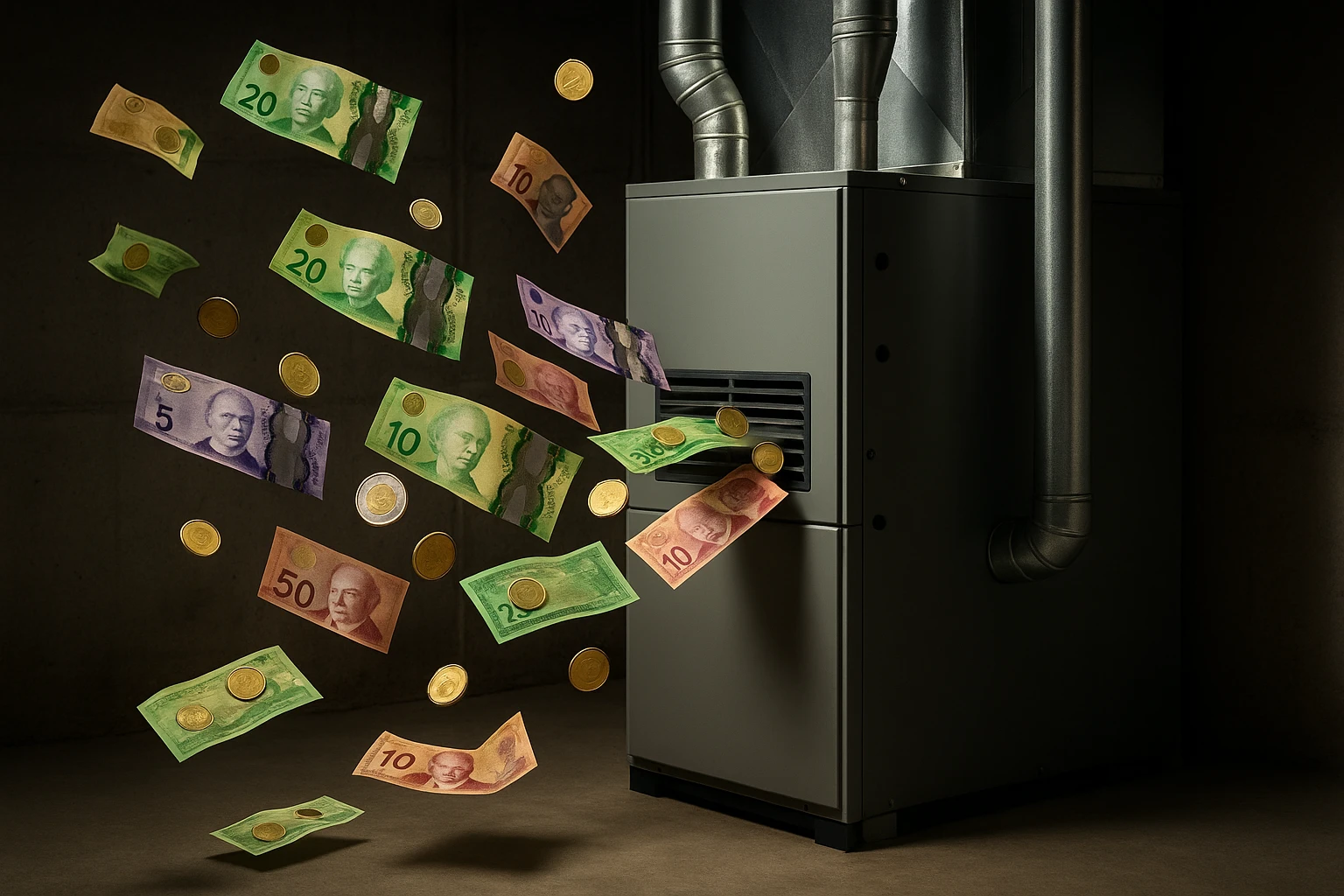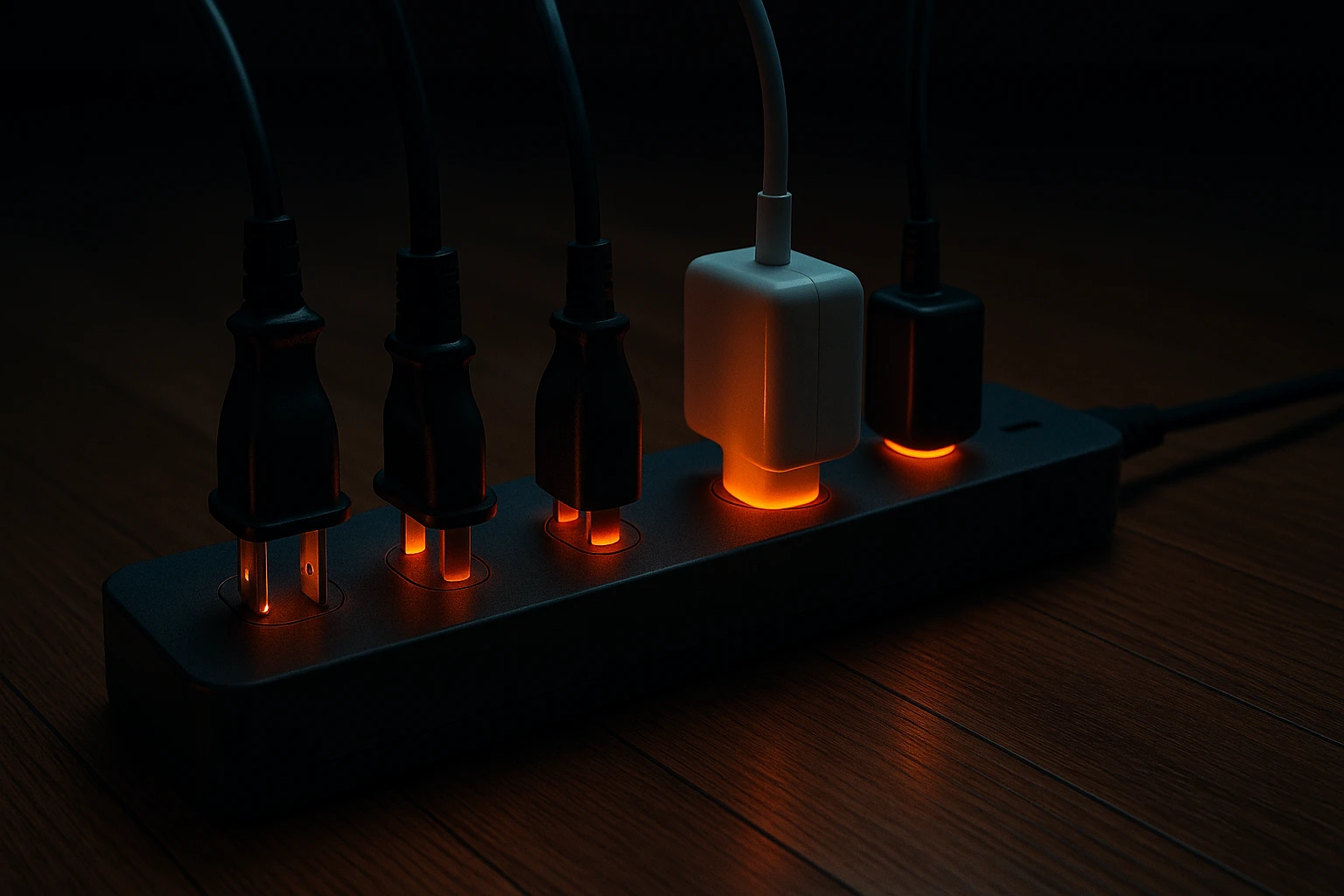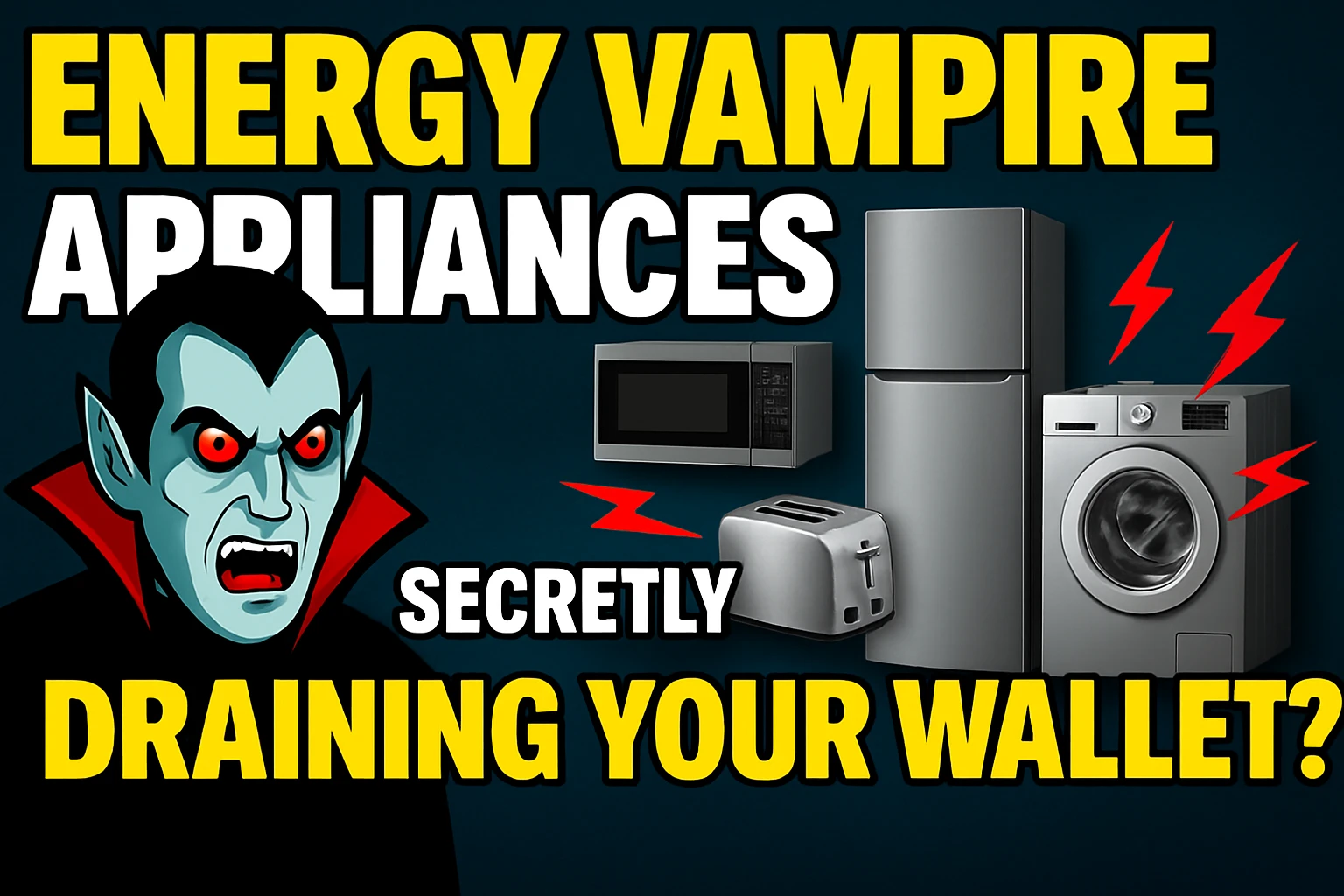Wondering which home appliances are secretly draining your wallet while you sleep? Get ready to uncover the hidden energy vampires lurking in your Burnaby home that could be costing you hundreds of dollars each year! Picture this: you’re curled up on your couch in your cozy Burnaby home, thinking you’re being super responsible by turning off the lights and unplugging your phone charger. Meanwhile, your energy bill arrives like an uninvited guest at a dinner party, and you’re left wondering where all that money went. Here’s the thing that might blow your mind – some of your most essential appliances are working overtime behind the scenes, quietly sipping electricity like they’re at an all-you-can-drink energy buffet. Living in Burnaby means dealing with those chilly Canadian winters and occasional hot summers, which makes our relationship with home appliances pretty complicated. We absolutely need them to stay comfortable, but they’re also the biggest contributors to those wallet-crushing utility bills. The truth is, most homeowners have no clue which appliances are the real energy hogs in their homes. What makes this whole situation even trickier is that energy costs have been climbing steadily, making it more important than ever to understand where your hard-earned dollars are going. Some appliances might seem innocent enough, but they’re actually consuming way more energy than you’d expect. Others run constantly in the background, adding up to significant costs over time.
Key Outtakes:
- Heating systems consume over 31% of your home’s total energy, making them the biggest energy vampires in your house
- Water heaters account for nearly 14% of energy consumption and run continuously throughout the day
- Cooling appliances like air conditioners use substantial energy during Burnaby’s warmer months, consuming over 10% of total home energy
- Common household items like refrigerators, dryers, and entertainment systems collectively drain significant energy even when not actively in use
- Strategic upgrades to energy-efficient models and simple habit changes can dramatically reduce your monthly energy bills

The Energy Vampire Reality Check
Let’s get real about what’s happening in your home right now. While you’re going about your daily routine, there’s an invisible energy feast happening all around you. These aren’t the obvious culprits like leaving every light on in the house – we’re talking about the appliances that are supposed to make your life easier but are secretly making your wallet lighter. The biggest shock for most Burnaby homeowners is discovering that their heating system alone gobbles up nearly one-third of their entire energy budget. That’s like having a houseguest who eats a third of all your groceries every month without asking. Your heating system doesn’t just turn on when you feel chilly – it’s constantly working to maintain your desired temperature, cycling on and off throughout the day and night. What makes this particularly brutal in our Burnaby climate is that we rely heavily on heating for a good chunk of the year. Unlike folks in warmer climates who might only need heating occasionally, we’re running these energy-hungry systems for months at a time. Every degree you set your thermostat higher translates directly into more energy consumption, and those costs add up faster than you might imagine.
The Heating System Money Drain
Now that we’ve established heating as the ultimate energy vampire, let’s dig deeper into why this system is such a massive drain on your resources. Understanding how your heating system operates can help you make smarter decisions about managing these costs throughout Burnaby’s colder months.  Your heating system is essentially running a 24/7 operation to keep your home comfortable. Even when it’s not actively blowing hot air, it’s monitoring temperatures, maintaining pilot lights, and preparing to kick into action the moment your home drops below your set temperature. This constant state of readiness requires energy, much like leaving your car idling in the driveway. The type of heating system you have makes a huge difference in your energy consumption patterns. Electric baseboard heaters, forced-air furnaces, and heat pumps all have different energy appetites. Older systems tend to be particularly hungry, often operating at much lower efficiency levels than modern alternatives. If your heating system is more than 10-15 years old, it’s likely consuming significantly more energy than necessary to achieve the same level of comfort. Insulation problems in your home can turn your heating system into an even bigger energy monster. When heat escapes through poorly insulated walls, windows, or attics, your heating system has to work overtime to compensate for that lost warmth. It’s like trying to fill a bucket with holes in the bottom – no matter how much energy you pour in, you’re fighting a losing battle against heat loss. One of the most effective ways to tame this energy vampire is through smart thermostat management and home weatherization. Even small adjustments, like lowering your thermostat by just a few degrees or ensuring proper insulation, can result in substantial energy savings. Professional energy audits can help identify exactly where your home is losing heat and provide targeted solutions for improvement.
Your heating system is essentially running a 24/7 operation to keep your home comfortable. Even when it’s not actively blowing hot air, it’s monitoring temperatures, maintaining pilot lights, and preparing to kick into action the moment your home drops below your set temperature. This constant state of readiness requires energy, much like leaving your car idling in the driveway. The type of heating system you have makes a huge difference in your energy consumption patterns. Electric baseboard heaters, forced-air furnaces, and heat pumps all have different energy appetites. Older systems tend to be particularly hungry, often operating at much lower efficiency levels than modern alternatives. If your heating system is more than 10-15 years old, it’s likely consuming significantly more energy than necessary to achieve the same level of comfort. Insulation problems in your home can turn your heating system into an even bigger energy monster. When heat escapes through poorly insulated walls, windows, or attics, your heating system has to work overtime to compensate for that lost warmth. It’s like trying to fill a bucket with holes in the bottom – no matter how much energy you pour in, you’re fighting a losing battle against heat loss. One of the most effective ways to tame this energy vampire is through smart thermostat management and home weatherization. Even small adjustments, like lowering your thermostat by just a few degrees or ensuring proper insulation, can result in substantial energy savings. Professional energy audits can help identify exactly where your home is losing heat and provide targeted solutions for improvement.
Water Heating: The Silent Energy Sipper
Moving from the obvious energy drain of heating systems, let’s talk about water heaters – the silent workhorses that most people completely forget about until they stop working. Your water heater is like that friend who’s always quietly doing helpful things in the background, except this friend is constantly costing you money while they’re being helpful. Traditional tank water heaters are essentially maintaining a reservoir of hot water 24 hours a day, seven days a week. Think about that for a second – even when you’re asleep, at work, or away on vacation, your water heater is keeping 40-80 gallons of water heated and ready for use. It’s like keeping a pot of coffee warm on the stove all day, even if you only drink two cups. The energy consumption gets even more intense when you consider how much hot water the average household uses. Every shower, load of laundry, and sink full of dishes requires your water heater to work harder to replenish the hot water supply. During busy mornings when everyone’s getting ready for work or school, your water heater can be working almost continuously to keep up with demand. What many Burnaby homeowners don’t realize is that the location and age of their water heater significantly impacts energy consumption. Water heaters tucked away in cold basements or garages have to work much harder to maintain water temperature because they’re constantly losing heat to the surrounding cold air. Older units also tend to be less insulated, allowing even more heat to escape wastefully. The good news is that water heating offers some of the best opportunities for energy savings. Tankless water heaters only heat water when you actually need it, eliminating the constant energy drain of maintaining a hot water tank. Even simple changes like lowering your water heater temperature by 10-20 degrees or adding an insulation blanket around your existing tank can make a noticeable difference in your monthly energy bills.
Cooling Systems and Major Appliances
While heating dominates our energy consumption during Burnaby’s colder months, cooling systems and other major appliances create their own energy challenges that many homeowners underestimate. These appliances might not run year-round like heating systems, but when they’re active, they can create some serious spikes in your energy usage. Air conditioning systems, even in our relatively mild Burnaby summers, can consume enormous amounts of energy when temperatures rise. Unlike heating systems that might cycle on and off gradually, air conditioners often run for extended periods trying to combat hot outdoor air and maintain indoor comfort. The energy draw becomes particularly intense during heat waves when your cooling system struggles to keep up with demand. Refrigerators represent a different kind of energy challenge because they never truly turn off. Your fridge is like the ultimate multitasker, constantly running its compressor, circulating air, and maintaining precise temperatures to keep your food safe. Modern refrigerators are much more efficient than older models, but they still represent a constant energy draw that adds up significantly over time. Clothes dryers deserve special attention because they combine high energy consumption with frequent use. Every load of laundry requires your dryer to generate substantial heat and run powerful motors to tumble and circulate air. What makes dryers particularly expensive to operate is that they typically run for 45-60 minutes per load, consuming consistent energy throughout that entire cycle. The cumulative effect of these appliances becomes clear when you consider that they often run simultaneously. Picture a typical evening when your air conditioner is running, your refrigerator cycles on, and you’re doing a load of laundry – suddenly you’ve got multiple high-energy appliances competing for electricity at the same time.
Entertainment and Computing Equipment
Modern homes are packed with entertainment and computing devices that create a constant background energy draw most people never think about. Your television, cable box, gaming console, computer, and various streaming devices are all quietly consuming electricity even when you think they’re “off.”  Many of these devices never truly power down completely. Instead, they enter standby mode, maintaining network connections, keeping clocks running, and staying ready to respond to remote controls or voice commands. While each device might only draw a small amount of standby power, the combined effect across multiple devices can add up to significant energy consumption over time. Gaming consoles are particularly notorious energy consumers, especially newer models with powerful processors and graphics capabilities. When actively gaming, these systems can consume as much electricity as a small refrigerator. Even more surprising is that many gaming consoles continue drawing substantial power in standby mode to maintain online connections and download updates.
Many of these devices never truly power down completely. Instead, they enter standby mode, maintaining network connections, keeping clocks running, and staying ready to respond to remote controls or voice commands. While each device might only draw a small amount of standby power, the combined effect across multiple devices can add up to significant energy consumption over time. Gaming consoles are particularly notorious energy consumers, especially newer models with powerful processors and graphics capabilities. When actively gaming, these systems can consume as much electricity as a small refrigerator. Even more surprising is that many gaming consoles continue drawing substantial power in standby mode to maintain online connections and download updates.
Frequently Asked Questions
How much can I save by upgrading to energy-efficient appliances?
Upgrading to energy-efficient appliances can result in substantial savings, particularly for high-consumption items like heating systems and water heaters. Energy Star certified appliances typically use 10-50% less energy than standard models, which translates to real money back in your pocket. For major appliances like furnaces or water heaters, you might see savings of $100-300 annually, while smaller appliances like refrigerators could save $50-100 per year. The payback period for energy-efficient upgrades varies depending on the appliance and your current energy costs. High-efficiency furnaces or heat pumps often pay for themselves within 5-10 years through energy savings, while smaller appliances might take 3-7 years. When you factor in utility rebates and tax incentives often available for energy-efficient upgrades, the payback period can be even shorter.
What’s the most cost-effective way to reduce energy consumption?
The most cost-effective energy reduction strategies typically involve behavioral changes and low-cost improvements rather than major appliance replacements. Simple actions like adjusting your thermostat by a few degrees, unplugging electronics when not in use, and using cold water for laundry can reduce energy consumption by 10-20% without any upfront investment. Weatherization improvements like sealing air leaks, adding insulation, and installing programmable thermostats offer excellent returns on investment. These improvements typically cost a few hundred dollars but can reduce energy bills by 15-30% annually. Professional energy audits can help identify the most impactful improvements for your specific home and budget.
Do smart home devices really help save energy?
Smart home devices can provide significant energy savings when used strategically, but they’re not automatic money-savers. Smart thermostats are typically the most effective, potentially reducing heating and cooling costs by 10-15% through automated scheduling and learning algorithms that optimize temperature settings based on your actual usage patterns. Smart power strips and outlets can eliminate standby power consumption from electronics, while smart lighting systems ensure lights are only on when needed. However, it’s important to remember that these smart devices themselves consume small amounts of energy, so the key is choosing devices that will manage higher-energy appliances and systems in your home.
Wrapping Up
Understanding which appliances are draining your wallet is the first step toward taking control of your energy bills. Your heating system, water heater, and cooling appliances are the biggest energy vampires in your Burnaby home, but even smaller appliances and electronics contribute significantly to your monthly costs when you add them all up. The good news is that you don’t have to replace every appliance in your home to see meaningful savings. Strategic upgrades focusing on the biggest energy consumers, combined with simple behavioral changes and basic home improvements, can dramatically reduce your energy consumption. Even small steps like adjusting thermostat settings, unplugging devices when not in use, and maintaining your existing appliances properly can put real money back in your pocket. Remember that energy efficiency is an investment that pays dividends for years to come. While some upgrades require upfront costs, the combination of lower monthly bills, increased home comfort, and potential increases in home value make these improvements worthwhile. Start with the biggest energy vampires in your home and work your way down the list – your wallet will thank you for it.
